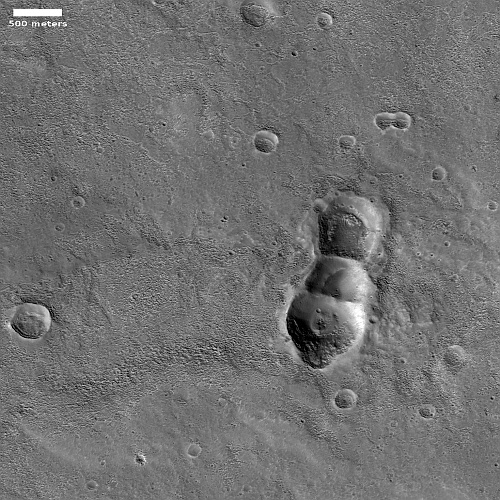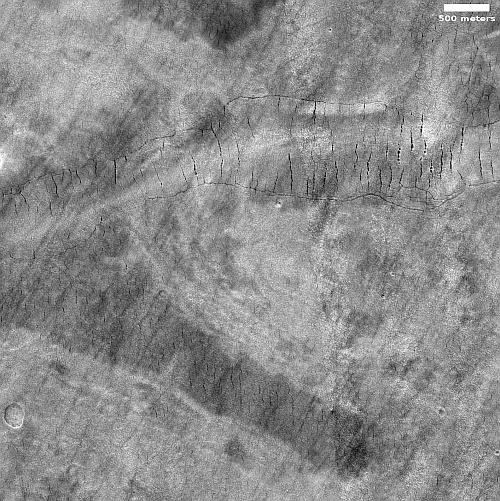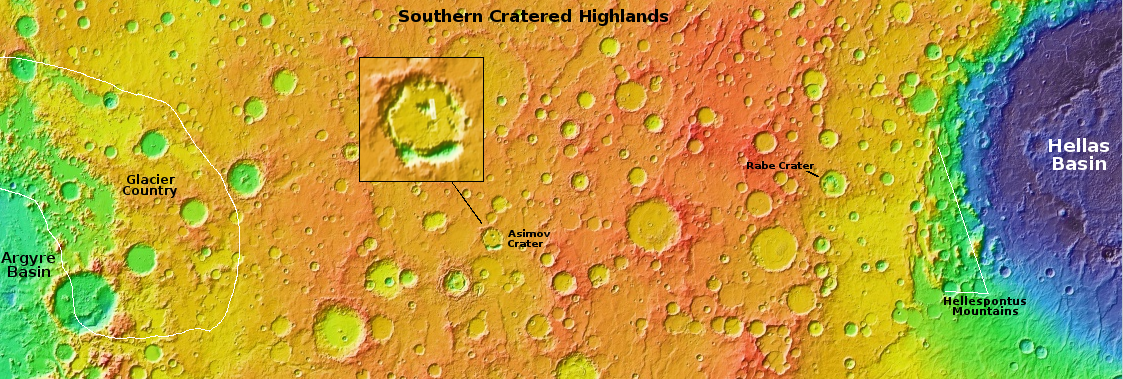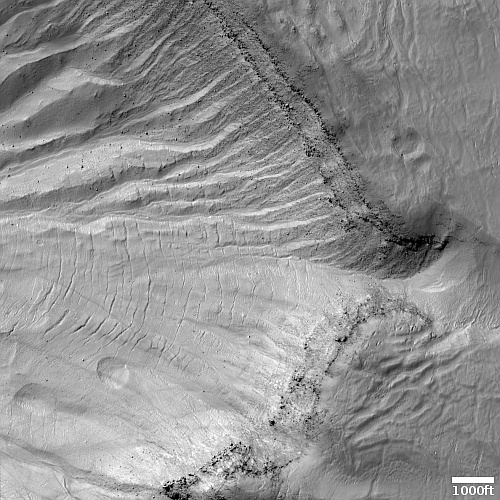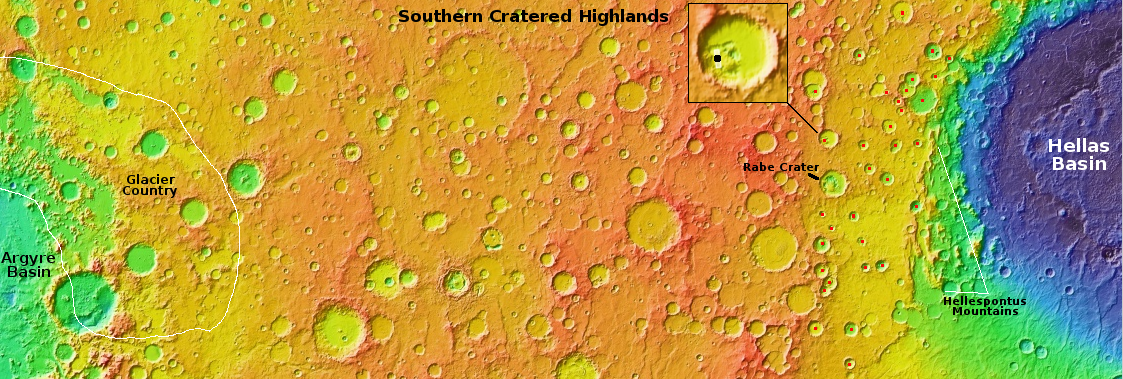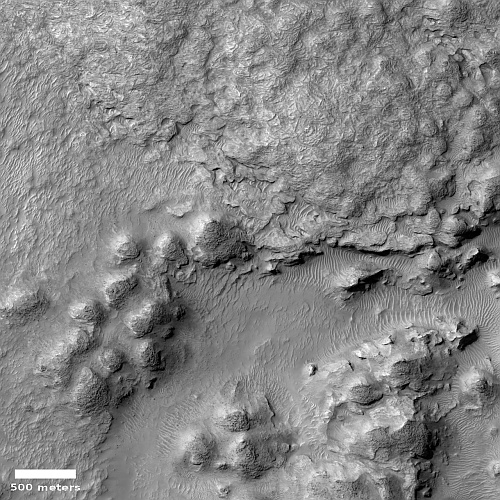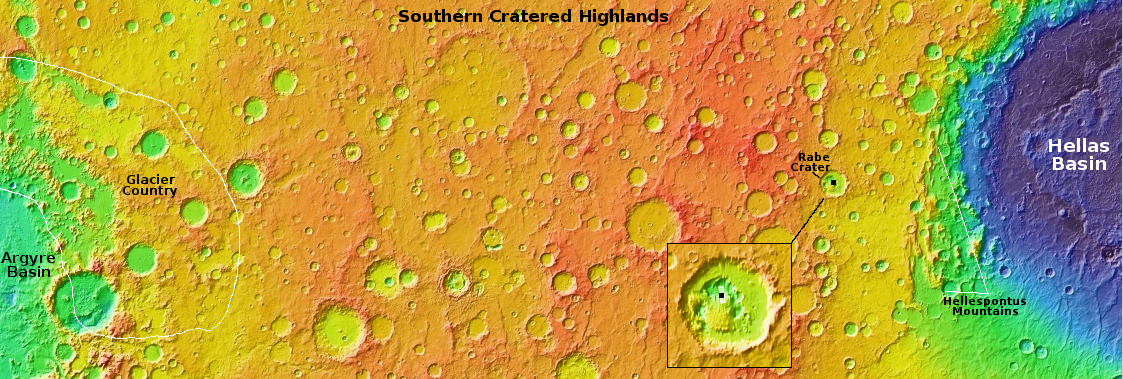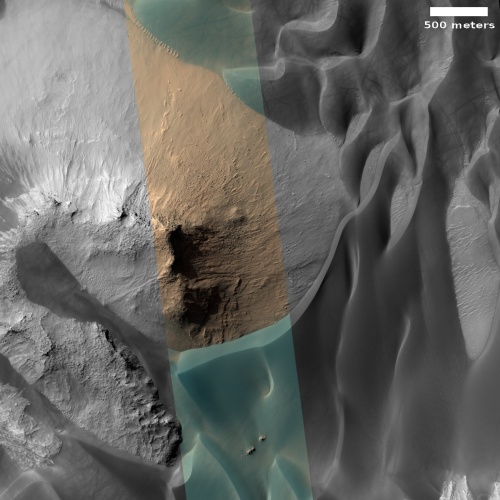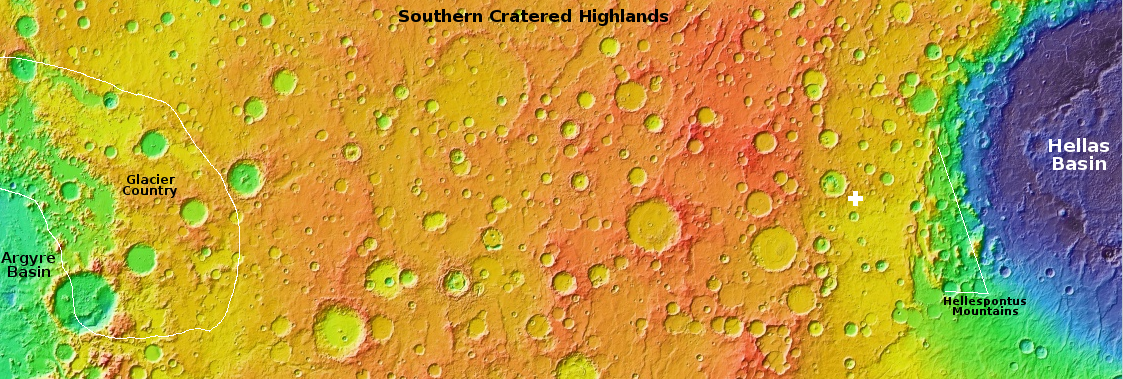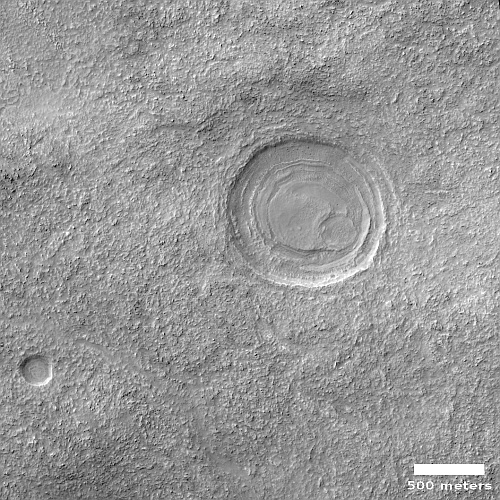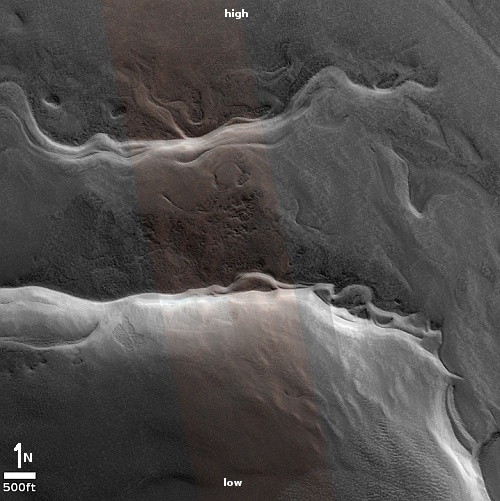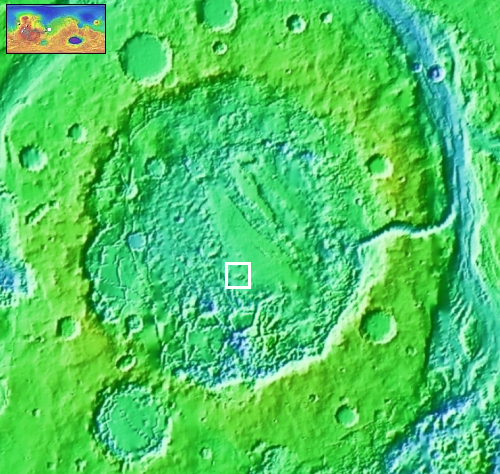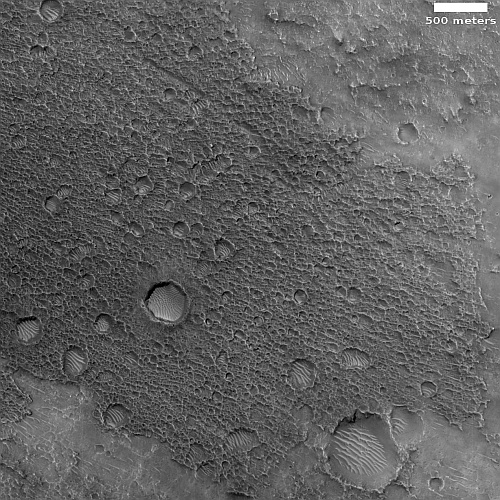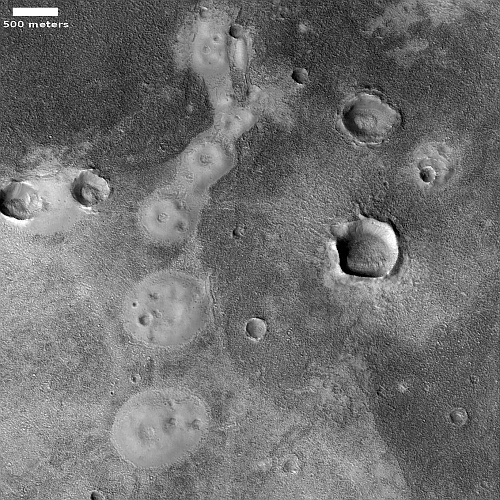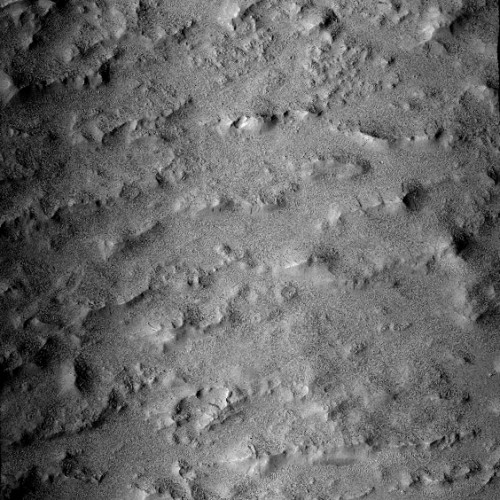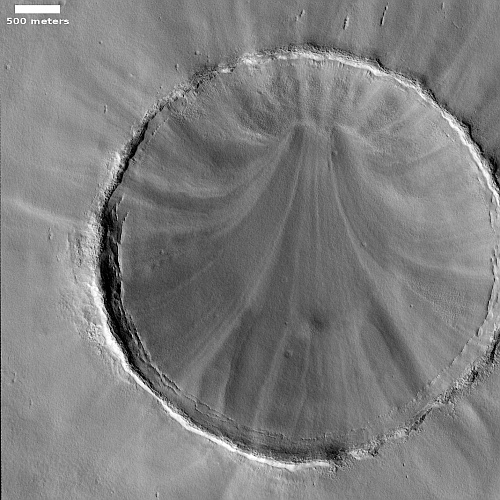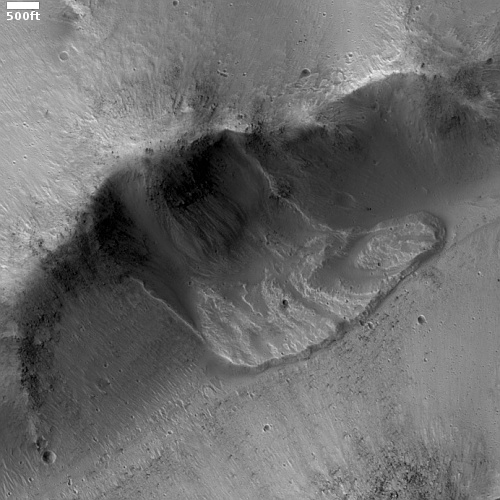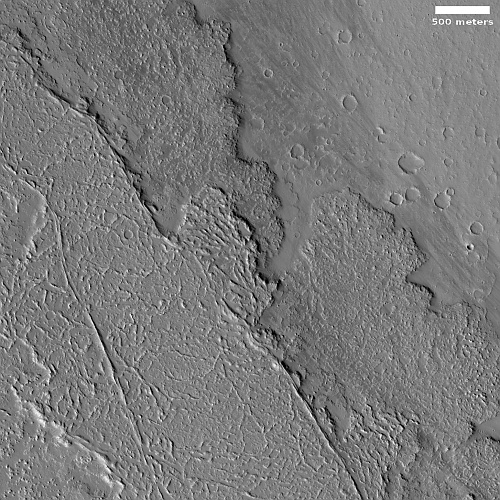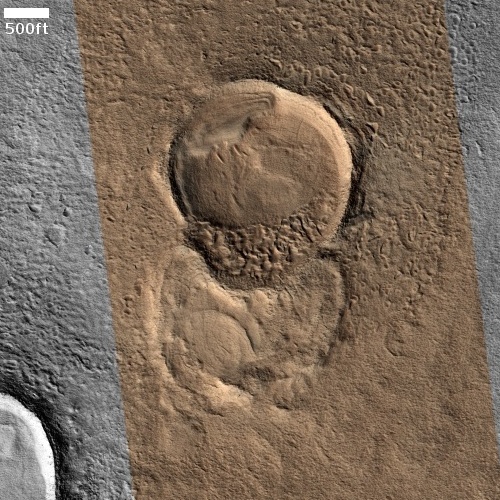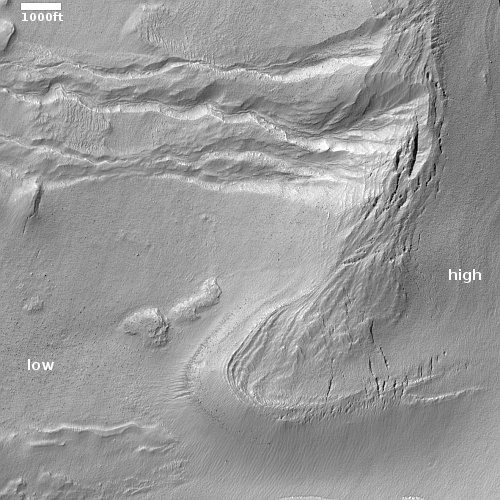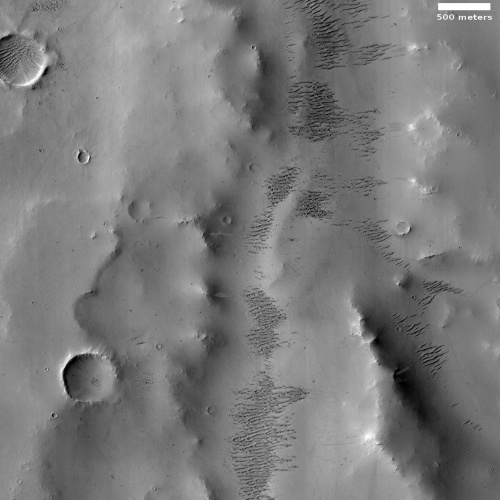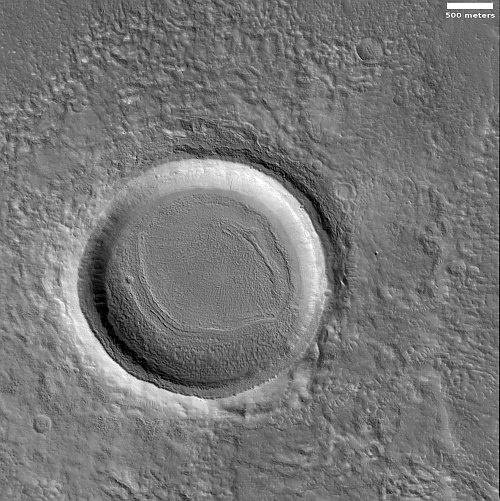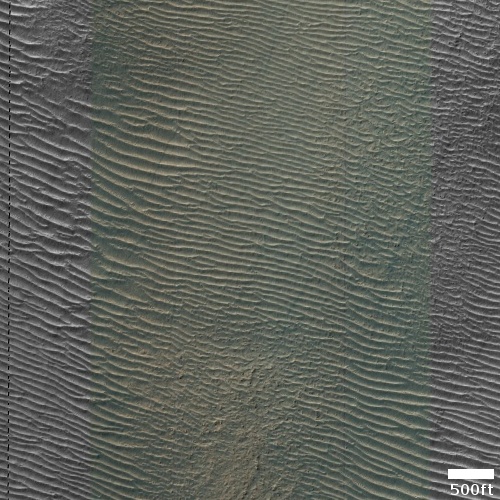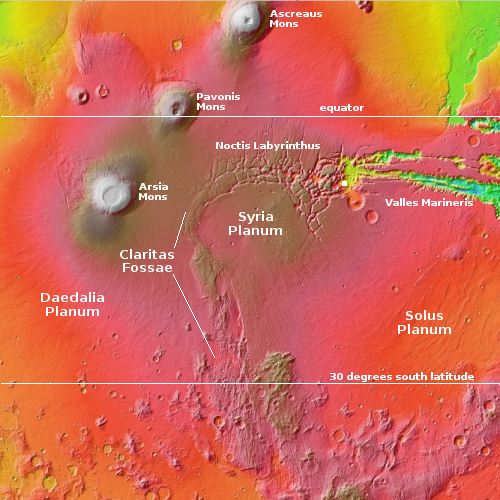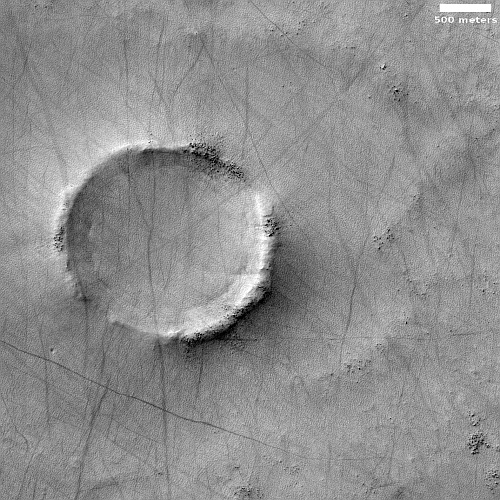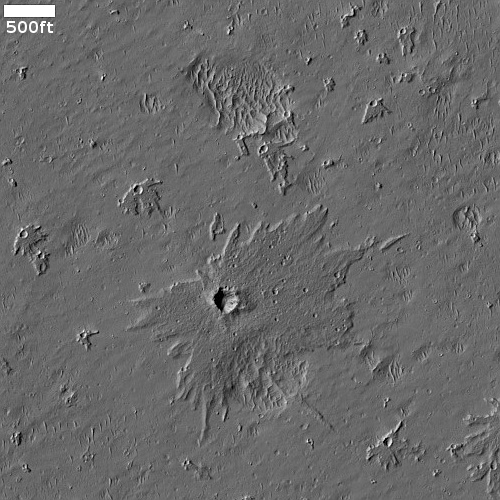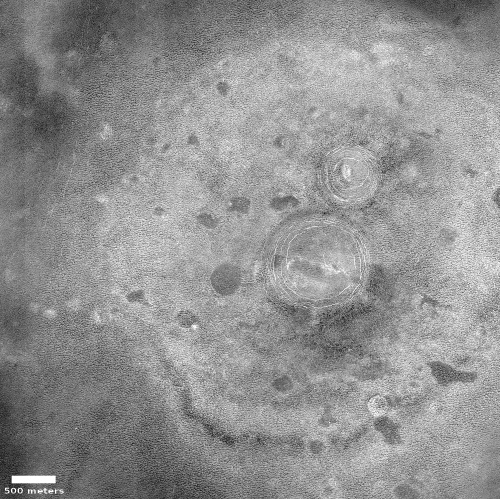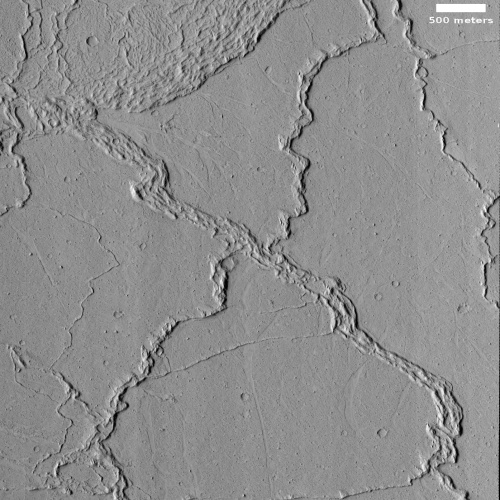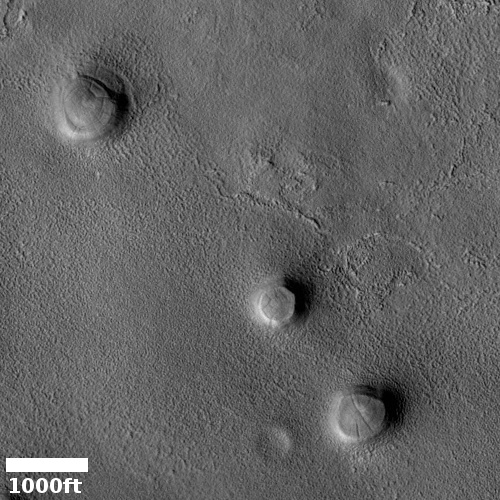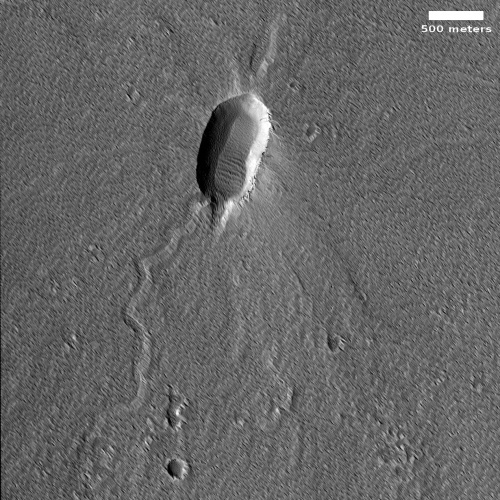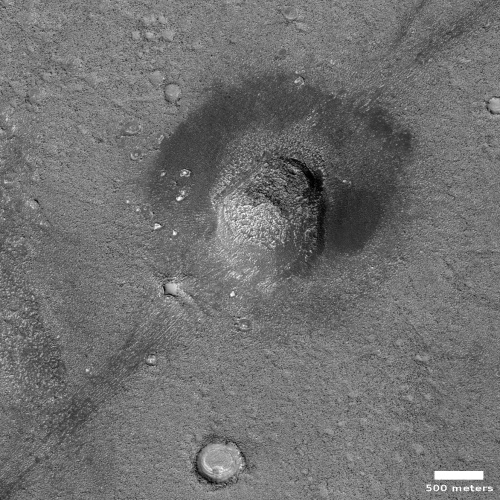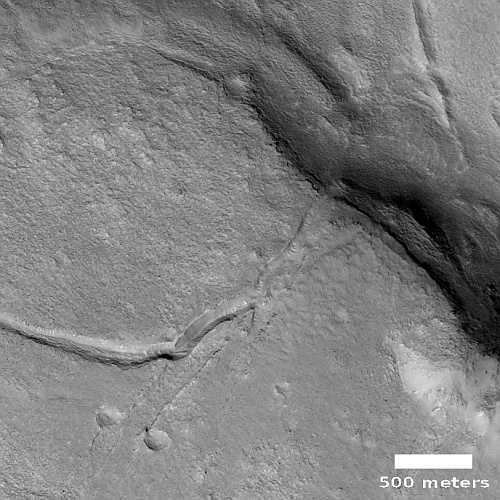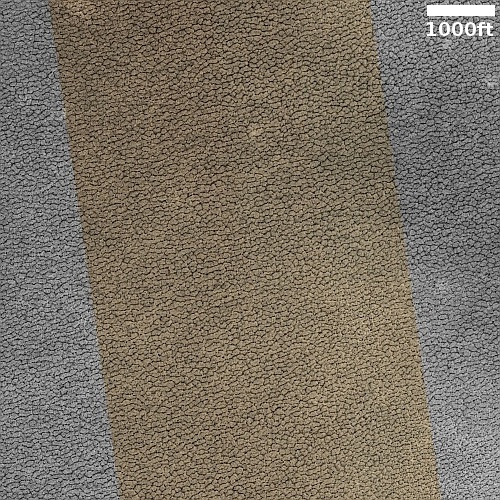Triple crater on Mars
Cool image time! The picture to the right, cropped, reduced, and sharpened to post here, was taken on January 22, 2023 by the high resolution camera on Mars Reconnaissance Orbiter (MRO). It shows what the scientists have labeled simply as a “triple crater,” a very apt description.
What caused this? The most obvious explanation is the arrival almost simultaneously of three pieces. As this asteroid or comet entered the thin Martian atmosphere as a single object, that atmosphere was thick enough to break it into three parts but not enough to destroy it entirely. When it hit the ground, the top piece hit first, with the center and bottom pieces following in sequence, thus partly obscuring the previous hits.
The smaller surrounding craters could either be additional pieces from the bolide, or secondary impacts from ejecta thrown out at impact.
» Read more
Cool image time! The picture to the right, cropped, reduced, and sharpened to post here, was taken on January 22, 2023 by the high resolution camera on Mars Reconnaissance Orbiter (MRO). It shows what the scientists have labeled simply as a “triple crater,” a very apt description.
What caused this? The most obvious explanation is the arrival almost simultaneously of three pieces. As this asteroid or comet entered the thin Martian atmosphere as a single object, that atmosphere was thick enough to break it into three parts but not enough to destroy it entirely. When it hit the ground, the top piece hit first, with the center and bottom pieces following in sequence, thus partly obscuring the previous hits.
The smaller surrounding craters could either be additional pieces from the bolide, or secondary impacts from ejecta thrown out at impact.
» Read more

